Attis
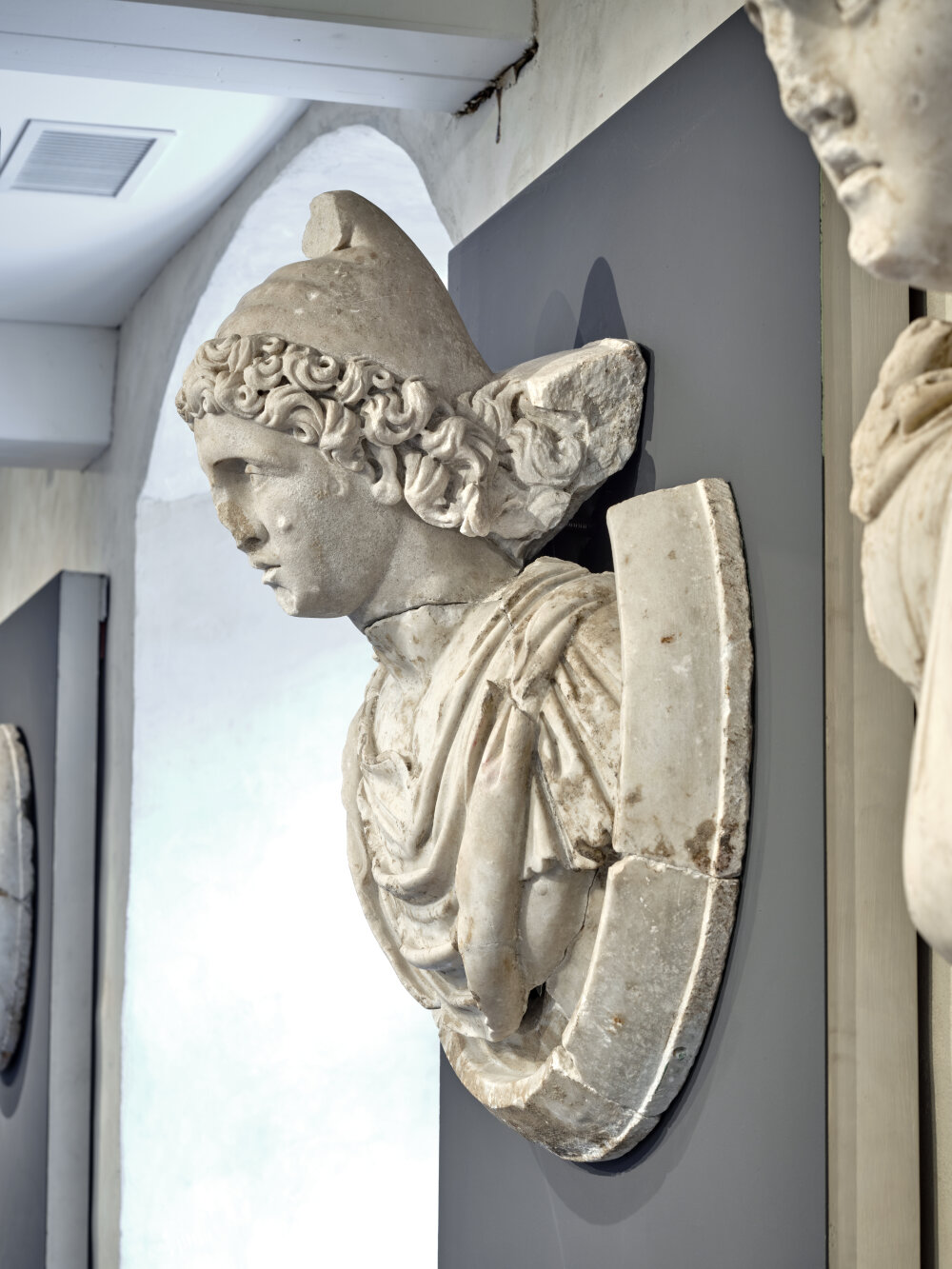
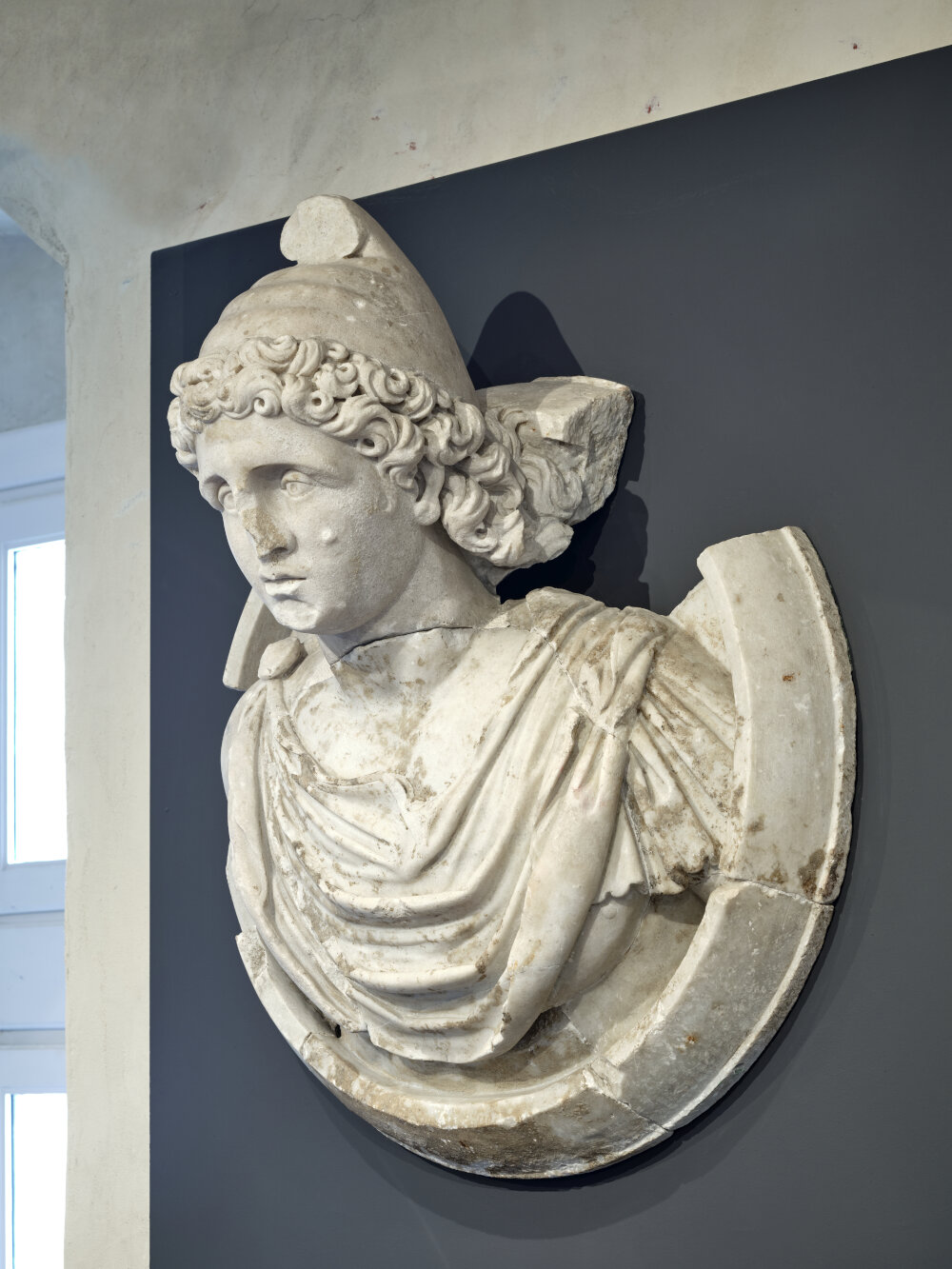
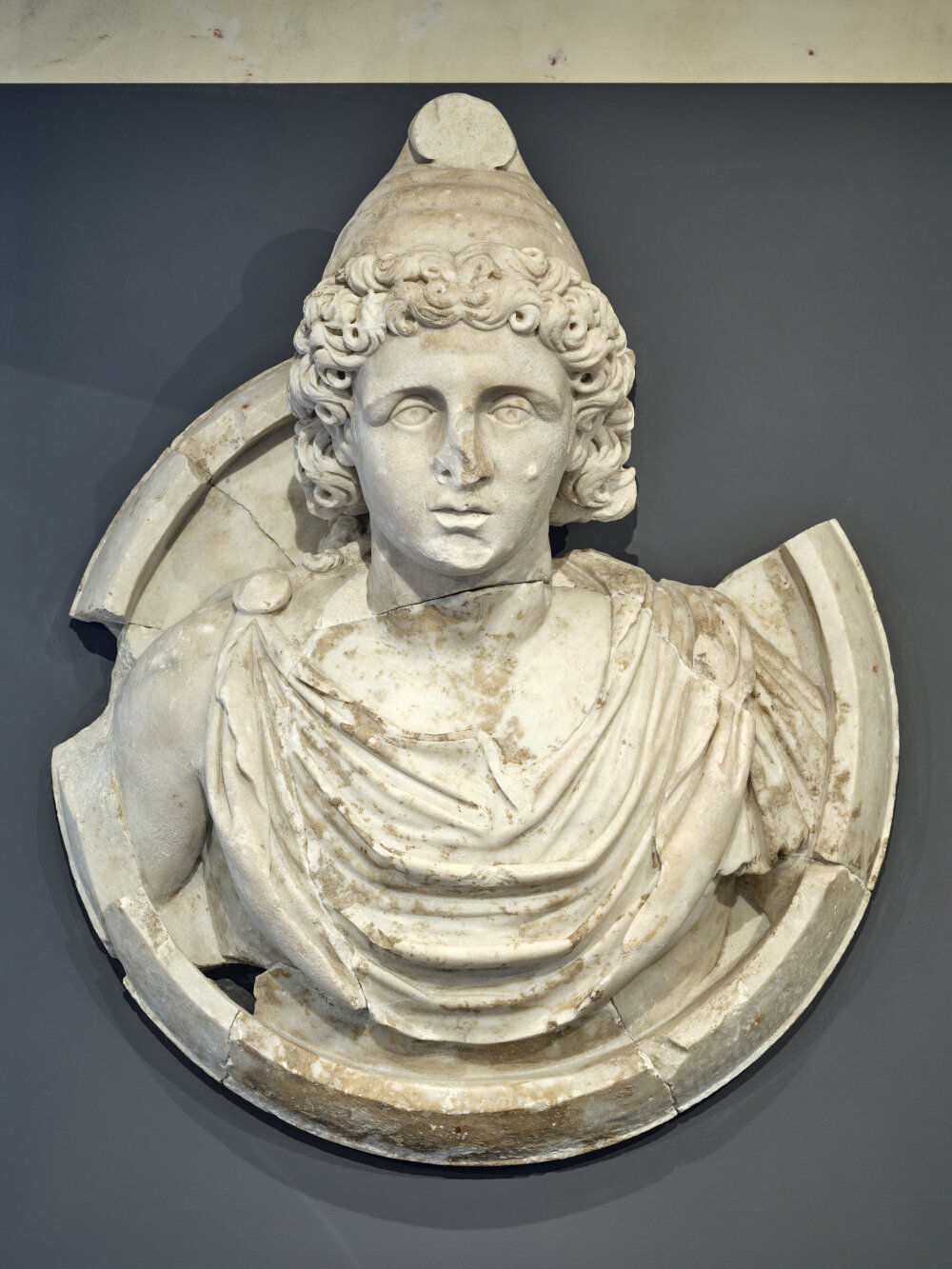
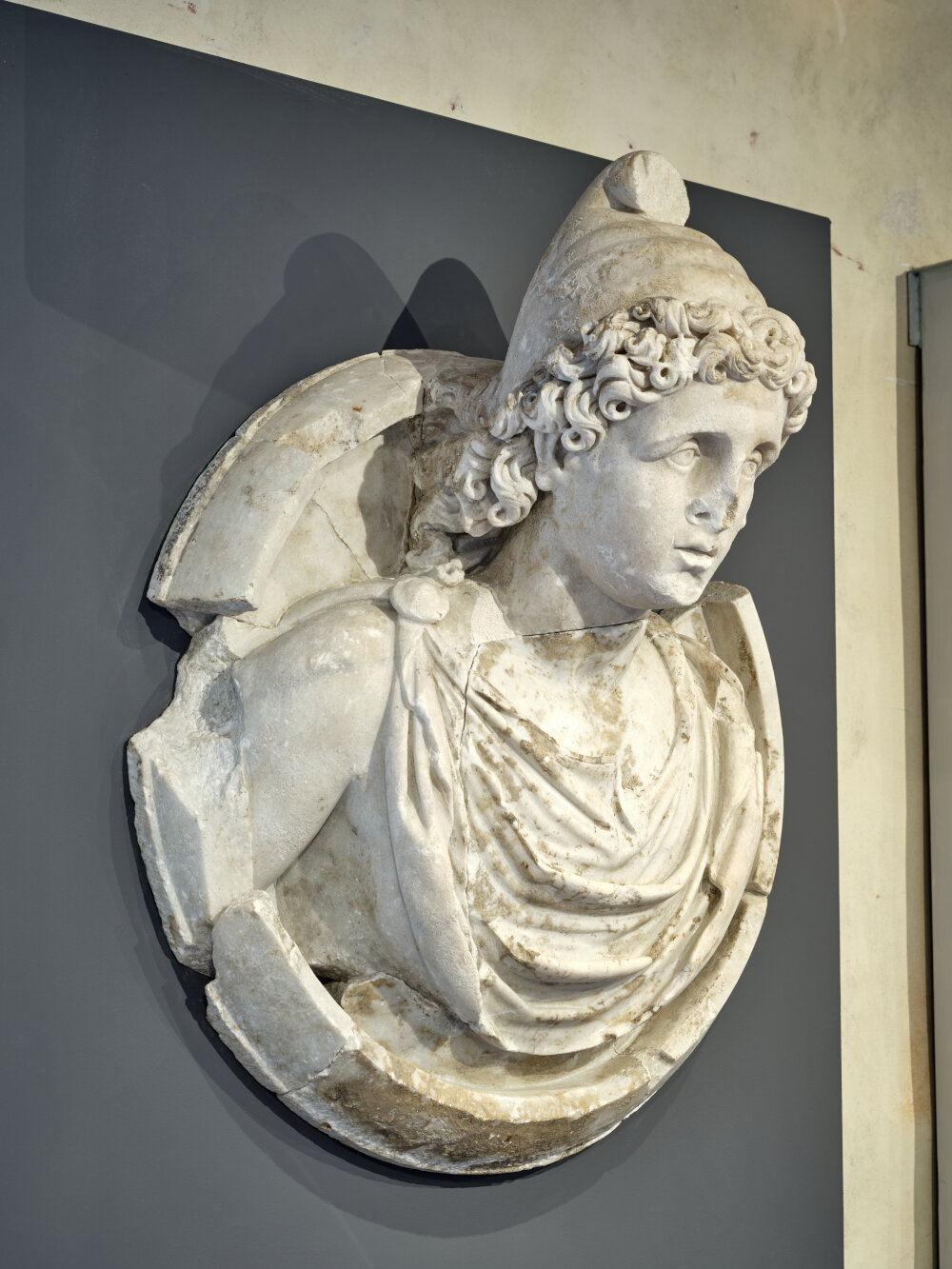
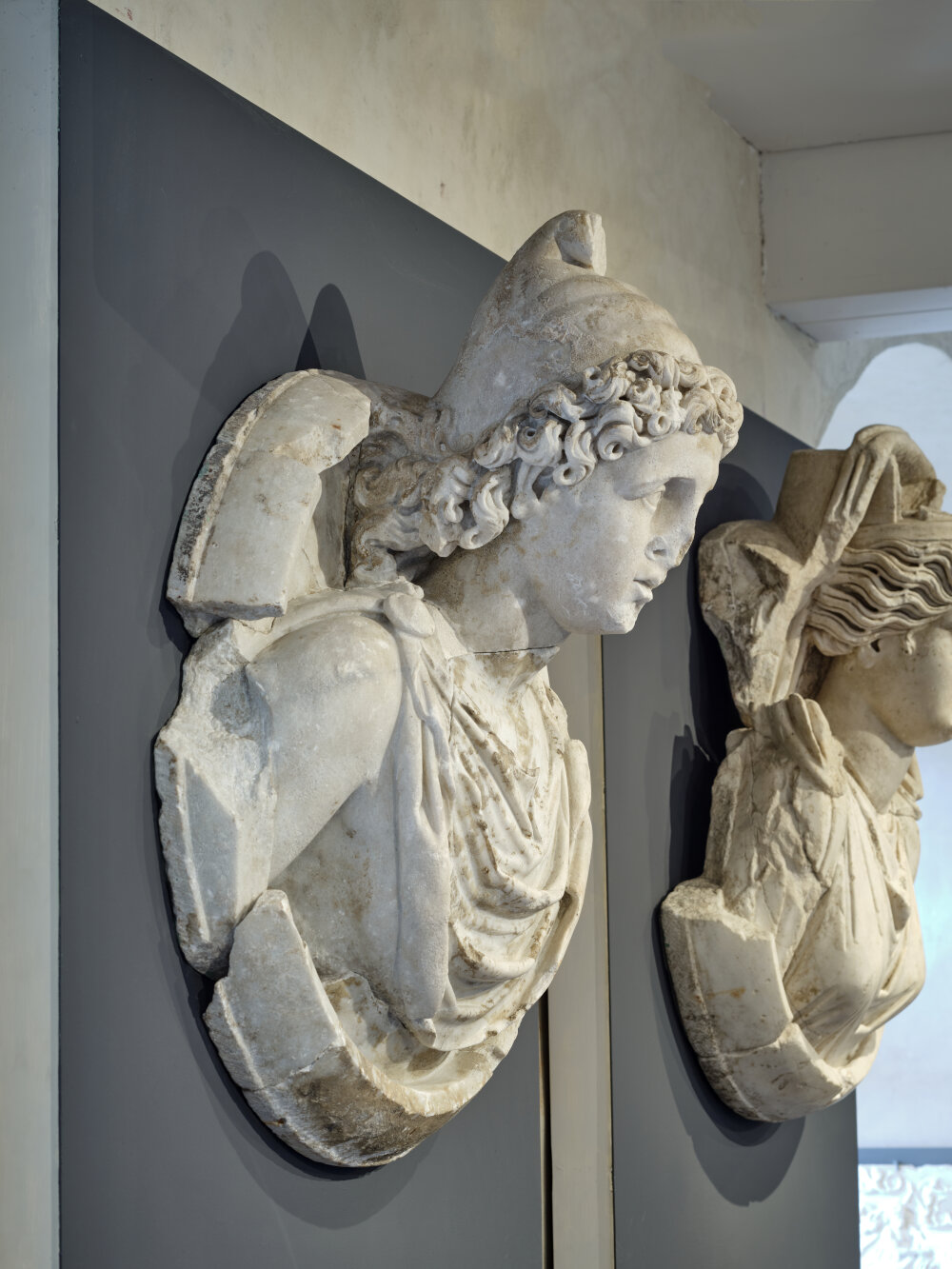
- Date de création
- End of the 3rd century
- Material
- Saint-Béat marble (Haute-Garonne)
- Dimensions
- H. 95 x l. 79 x P. 43 (cm)
- Inventory number
- Ra 34 l
- Photo credits
- Daniel Martin
In Phrygia, Attis was the consort of the goddess Cybele. The latter was very much in love with him, and in an access of jealousy, she drove him mad, causing him to cut off his genitals and transform himself into a pine tree. Every 22nd March in Rome, the procession of the « Entrance of the Tree » celebrated the death of the god. A cut pine tree, decorated with strips of red woollen cloth and musical instruments, was carried to the temple of Cybele.
The head of the young Anatolian from Chiragan has rightly been compared to that of Hippolyta, Queen of the Amazons, represented in one of the reliefs of the Labours of Hercules J.-C. Balty, D. Cazes, Les portraits romains, 1 : La Tétrarchie, 1.5 (Sculptures antiques de Chiragan (Martres-Tolosane), Toulouse, 2008, p. 126.. They are indeed very similar, wearing the same Phrygian cap and sporting identical curly hair. There is no doubt that they were all made by the same sculptor’s workshop.
Images of deities mounted on shields are a frequent theme in Roman art. Four centuries before our era, gods were already being depicted in this way in central Italy. This association between divine entities and the circular shape of the defensive weapon was based on the famous Homeric description of the shield that the goddess Thetis gave to her son Achilles Homère, Iliade, 7th century BC, XVIII, 478-617.. Legend has it that this precious weapon served as a cosmic symbol because it represented the Earth, with its circular shape surrounded by the waves of the ocean, and inhabited by city-building humans, either living in peace or engaged in terrible wars. In this context, the gods, as masters and great commanders of human destinies, contributed to the labours and activities of mortals, and their battles in particular. Because they were symbolic of heroism and eternity, in Rome images on shield (imago clipeata), whether sculpted, engraved or painted, also served the emperors’ aspirations to glory.
The tondi discovered in Chiragan and dated to the late 4th or early 5th century by R. Smith, can be linked to the  series discovered at Aphrodisias, in Caria R.R.R. Smith, « Late Roman Philosopher Portraits from Aphrodisias, » The Journal of Roman Studies, 80, 1990, pp. 127–155, en partic. pp. 127-155.. Maybe because they are portraits and not divine representations, these oriental works appear to be more expressive than those found in Chiragan, whose faces, on the other hand, are stylistically very similar to that of the
series discovered at Aphrodisias, in Caria R.R.R. Smith, « Late Roman Philosopher Portraits from Aphrodisias, » The Journal of Roman Studies, 80, 1990, pp. 127–155, en partic. pp. 127-155.. Maybe because they are portraits and not divine representations, these oriental works appear to be more expressive than those found in Chiragan, whose faces, on the other hand, are stylistically very similar to that of the 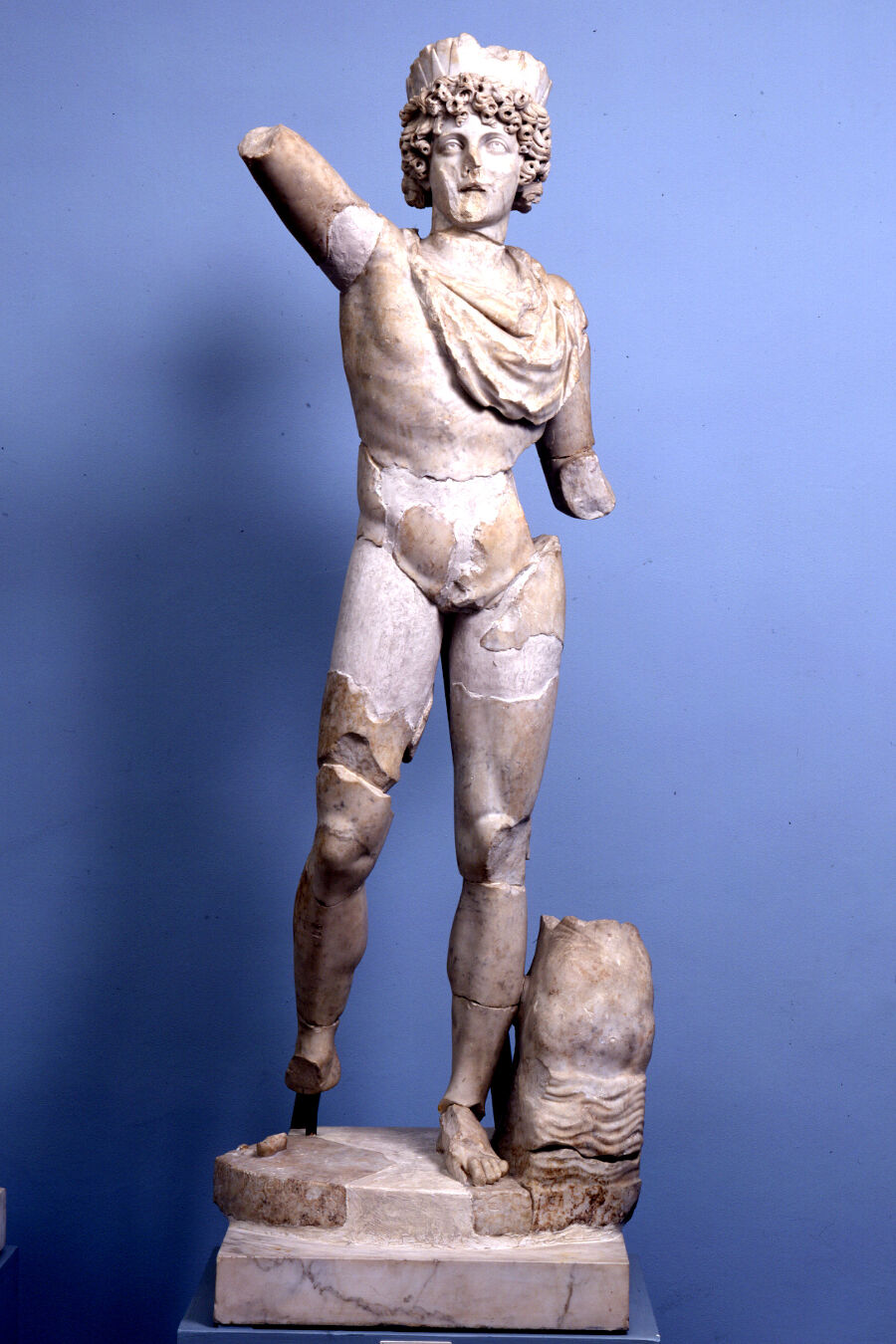 Helios of Esquilin kept in Copenhagen. The heads of Aphrodisias, which are more elongated and have narrower cheekbones, are also devoid of the deep circular trepan lines that are used to depict beards and hair, a characteristic that is typical of the heads of the villa by the river Garonne. The manner in which strands of hair are depicted on the statues found in Chiragan are infinitely more complex. On some of the carvings, individual locks of hair are connected by small but clearly visible « bridges » within the wide trepan lines that visually divide the strands of hair. Numerous fragments, kept in the museum’s reserves, bear witness to the importance of this series of imagines clipeatae (images on shields) that were part of the lavish decor, which, in addition to these medallions of the gods, included reliefs of the Labours of Hercules and large pilasters covered with acanthus foliage inhabited by tiny animals.
Helios of Esquilin kept in Copenhagen. The heads of Aphrodisias, which are more elongated and have narrower cheekbones, are also devoid of the deep circular trepan lines that are used to depict beards and hair, a characteristic that is typical of the heads of the villa by the river Garonne. The manner in which strands of hair are depicted on the statues found in Chiragan are infinitely more complex. On some of the carvings, individual locks of hair are connected by small but clearly visible « bridges » within the wide trepan lines that visually divide the strands of hair. Numerous fragments, kept in the museum’s reserves, bear witness to the importance of this series of imagines clipeatae (images on shields) that were part of the lavish decor, which, in addition to these medallions of the gods, included reliefs of the Labours of Hercules and large pilasters covered with acanthus foliage inhabited by tiny animals.
P. Capus
Bibliography
- Ensoli, La Rocca 2000 S. Ensoli, E. La Rocca (eds.), Aurea Roma : dalla città pagana alla città cristiana. Mostra, Palazzo delle esposizioni, Roma, 22 dicembre 2000-20 aprile 2001, Rome. p. 458, no 55
- Beckmann 2020 S.E. Beckmann, « The Idiom of Urban Display: Architectural Relief Sculpture in the Late Roman Villa of Chiragan (Haute-Garonne), » American Journal of Archaeology, 124, 1, pp. 133–160. p. 139
- Cazes et al. 1999 D. Cazes, E. Ugaglia, V. Geneviève, L. Mouysset, J.-C. Arramond, Q. Cazes, Le Musée Saint-Raymond : musée des Antiques de Toulouse, Toulouse-Paris. p. 84
- Du Mège 1835 A. Du Mège, Description du musée des Antiques de Toulouse, Toulouse. no 154
- Du Mège 1828 A. Du Mège, Notice des monumens antiques et des objets de sculpture moderne conservés dans le musée de Toulouse, Toulouse. no 67
- Espérandieu 1908 É. Espérandieu, Recueil général des bas-reliefs de la Gaule romaine, 2. Aquitaine, Paris. p. 31, no 892, fig. 4
- Joulin 1901 L. Joulin, Les établissements gallo-romains de la plaine de Martres-Tolosane, Paris. no 58 B
- Massendari 2006 J. Massendari, La Haute-Garonne : hormis le Comminges et Toulouse 31/1 (Carte archéologique de la Gaule), Paris. p. 252-253, fig. 134
- Rachou 1912 H. Rachou, Catalogue des collections de sculpture et d’épigraphie du musée de Toulouse, Toulouse. no 34 b
- Roschach 1892 E. Roschach, Catalogue des musées archéologiques de la ville de Toulouse : Musée des Augustins, Musée Saint-Raymond, Toulouse. no 34 e
- Smith 1990 R.R.R. Smith, « Late Roman Philosopher Portraits from Aphrodisias, » The Journal of Roman Studies, 80, pp. 127–155.
- Ziéglé 2002 A. Ziéglé, L’Hercule de Bordeaux (Les chefs-d’oeuvre du Musée d’Aquitaine), Bordeaux.
To cite this notice
Capus P., "Attis", in The sculptures of the roman villa of Chiragan, Toulouse, 2019, online <https://villachiragan.saintraymond.toulouse.fr/en/ark:/87276/a_ra_34_l>.